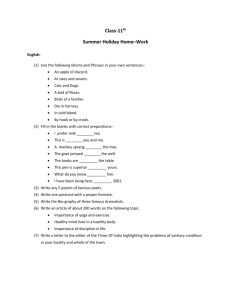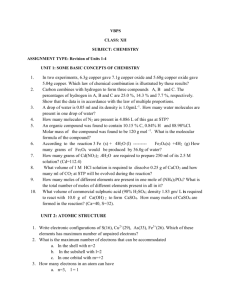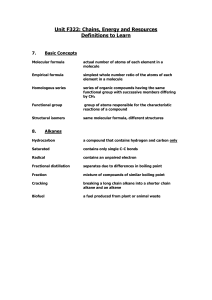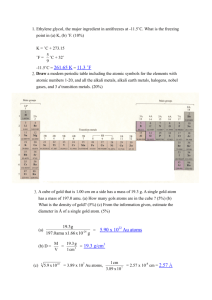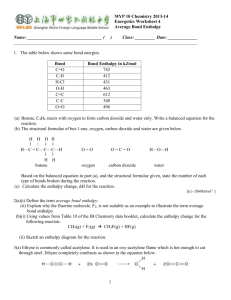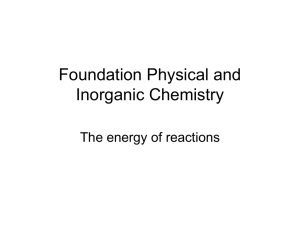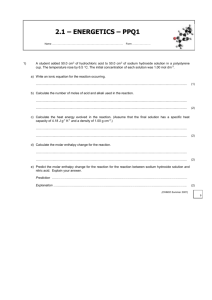AS Chemistry - Module 1 Definitions
advertisement
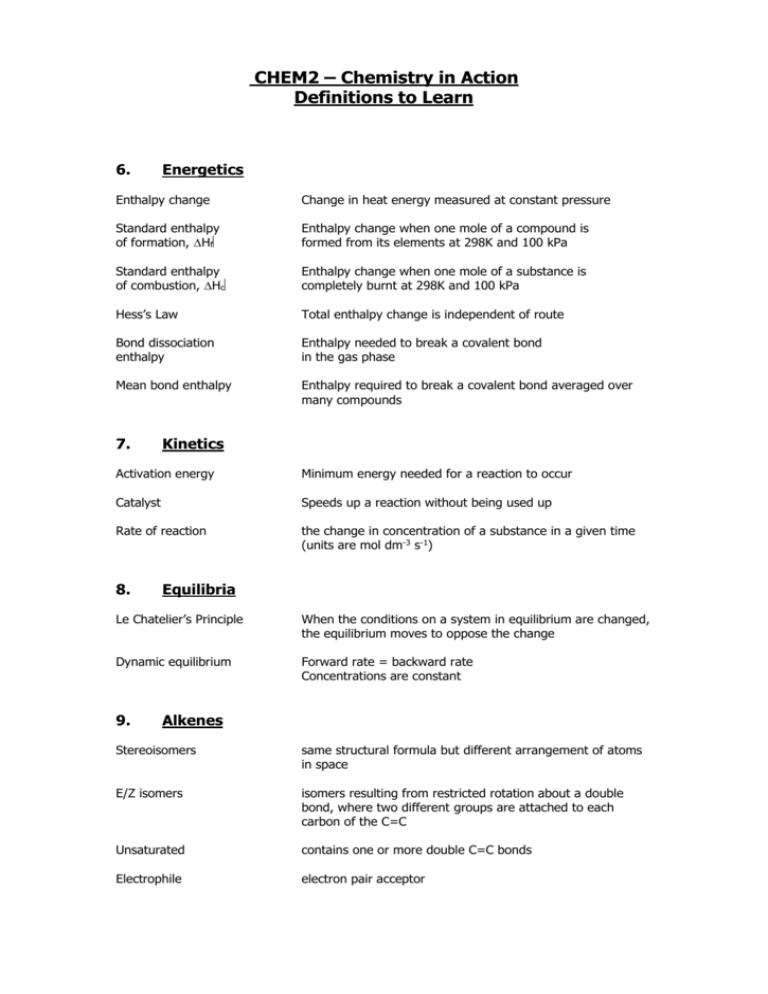
CHEM2 – Chemistry in Action Definitions to Learn 6. Energetics Enthalpy change Change in heat energy measured at constant pressure Standard enthalpy of formation, Hf Enthalpy change when one mole of a compound is formed from its elements at 298K and 100 kPa Standard enthalpy of combustion, Hc Enthalpy change when one mole of a substance is completely burnt at 298K and 100 kPa Hess’s Law Total enthalpy change is independent of route Bond dissociation enthalpy Enthalpy needed to break a covalent bond in the gas phase Mean bond enthalpy Enthalpy required to break a covalent bond averaged over many compounds 7. Kinetics Activation energy Minimum energy needed for a reaction to occur Catalyst Speeds up a reaction without being used up Rate of reaction the change in concentration of a substance in a given time (units are mol dm-3 s-1) 8. Equilibria Le Chatelier’s Principle When the conditions on a system in equilibrium are changed, the equilibrium moves to oppose the change Dynamic equilibrium Forward rate = backward rate Concentrations are constant 9. Alkenes Stereoisomers same structural formula but different arrangement of atoms in space E/Z isomers isomers resulting from restricted rotation about a double bond, where two different groups are attached to each carbon of the C=C Unsaturated contains one or more double C=C bonds Electrophile electron pair acceptor 10. Alcohols Fuel a substance that is burned to produce heat Biofuel a fuel produced from biological sources Carbon neutral an activity that has no net annual carbon emissions to the atmosphere 11. Haloalkanes Nucleophile lone pair donor Hydrolysis breaking bonds using water Radical contains an unpaired electron 12. Redox & Analytical Techniques Oxidation loss of electrons or increase in oxidation number Reduction gain of electrons or decrease in oxidation number Oxidising agent electron acceptor Reducing agent electron donor Molecular ion complete molecule minus one electron


